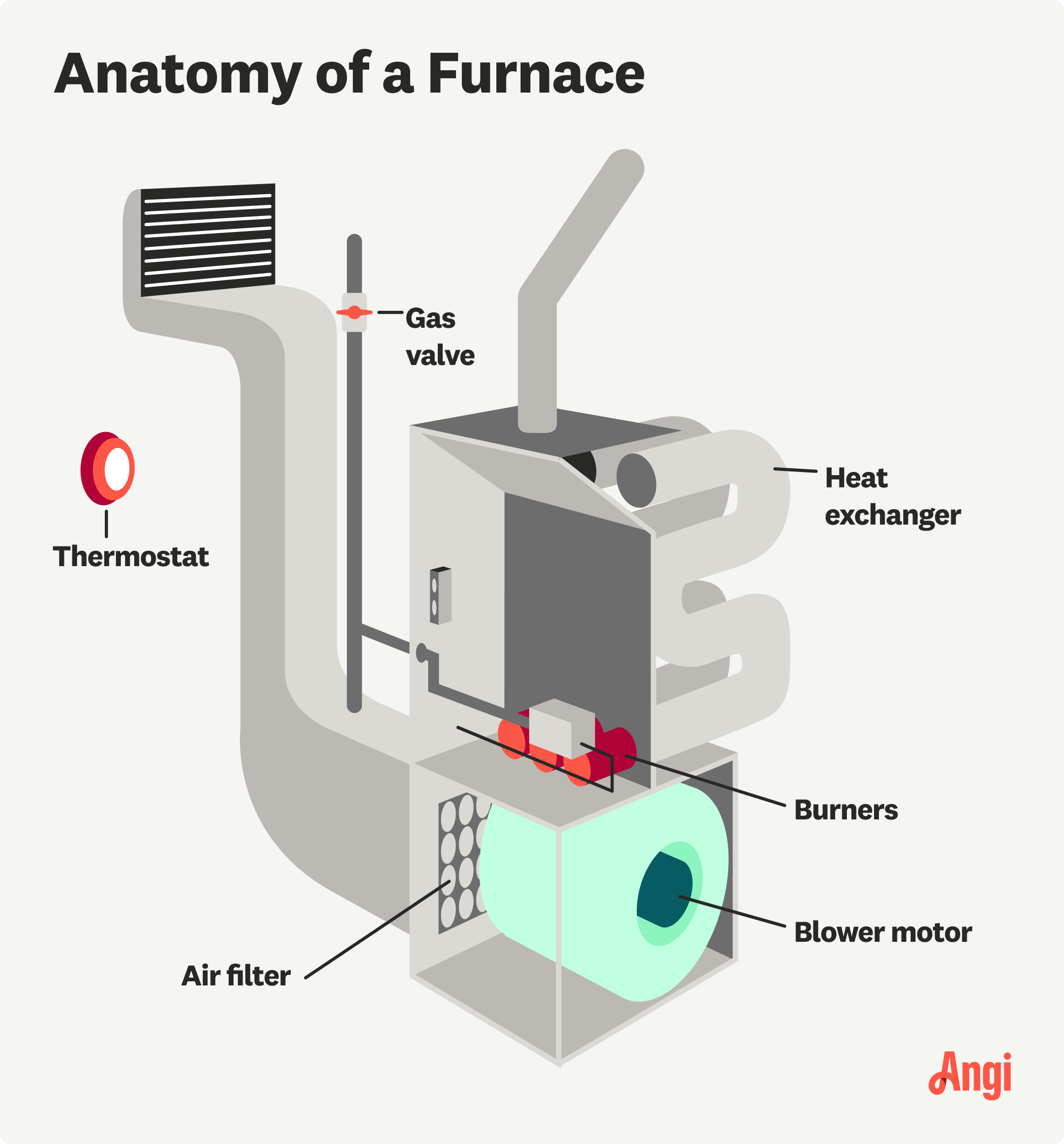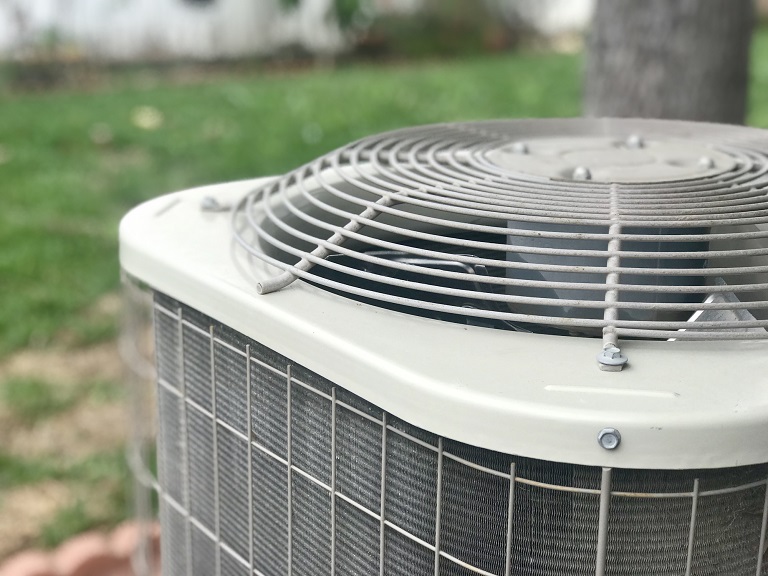
When your heat goes out, it can cause a bit of a panic. But knowledge is power, so let's go over radiator repair costs before that happens.
What’s in a (home heating) name?


HVAC refers to the heating, ventilation, and air conditioning system inside a building.
A furnace is a key part of many HVAC systems, using fuel to heat air that’s passed through vents in the house.
Replacing a furnace can affect how efficient or how costly an HVAC system is.
When we talk about heating and cooling in a house, we use terms like air conditioning and ducts as well as HVAC and furnace. If you’re not acquainted with those terms, you might be confused about the difference between a furnace vs. HVAC. Below, our guide breaks down what you need to know about HVAC and furnaces so you’ll be ready to talk to contractors, technicians, and other experts about what your home needs.
HVAC (traditionally pronounced “H” then “VAC” like in vacuum) refers to heating, ventilation, and air conditioning. HVAC describes these systems and how they work inside a home to control the temperature and comfort of a house.
A furnace, meanwhile, turns a fuel source into heat, which is then circulated through vents via a fan system.
Think of HVAC as the overarching system where everything’s connected, and furnaces as an important part of that system that are in charge of heating. Not every HVAC system has a furnace, but almost all furnaces in homes are considered part of the HVAC system.
| Type of Difference | HVAC | Furnace |
|---|---|---|
| Purpose | Whole home heating/cooling | Home heating |
| Place in home | Integrated system | Part of HVAC or standalone |
| Price | $7,500–$12,000 | $4,700 (average) |
| Energy ratings | SEER2/HSPF | AFUE |

Nearly any type of building-based climate control can be considered an HVAC system. These systems use a variety of different units which all work together to manage temperatures. Those units can include things like:
Indoor and outdoor AC units (including condensers, evaporators, and other important parts)
Fan systems and blowers
Floor and ceiling vents
Boilers (when used for heating)
Drain lines connected to AC, heat pumps, and other units
Exhaust pipes connected to furnaces and similar units
An HVAC system doesn’t need every letter in the acronym to count as HVAC. For example, many homes use duct-free systems to help save energy and cut down on allergies, but they’re still considered HVAC. Some HVAC systems don’t have an AC unit or furnace. Others may use hybrid systems or packaged systems. Offices and apartment buildings may also have more complicated setups depending on the design, but it all falls under the HVAC umbrella.

If a furnace exists in a house with an HVAC system, that furnace is nearly always considered part of the HVAC system. Heating sources like fireplaces, space heaters, water heaters, boilers, and heat pumps are not considered furnaces.
The type of fuel a furnace uses is very important. These days we see several different kinds of fuel used in home furnaces, notably:
Natural gas: Natural gas requires a nearby gas line, but it’s a very reliable and affordable source of fuel for furnaces.
Propane: Propane (a.k.a. LPG or liquid propane gas) is an alternative to natural gas, typically kept in tanks near the furnace. Propane is typically more expensive than natural gas, but prices can vary based on location.
Electric heating elements: Some furnaces use electric elements to generate heat, similar to how electric stovetops work. However, this is typically reserved for supplementary power on a heat pump or a similar situation. Electric heating elements take an enormous amount of electricity to use in a furnace, and are usually too expensive to use as a primary source of heat.
Solar power: Solar power is typically used in conjunction with electric heating elements and other systems to provide supplemental power to a furnace, cutting down on other fuel costs.
Oil: We rarely see oil furnaces these days except in some parts of the Northeast United States. They have been phased out in most locations, as oil is more expensive than other fuels and produces far more pollutants which also creates additional fire risks. However, older houses may still use oil.
Wood pellets: Wood pellets are an alternative fuel source for some standalone furnaces designed to save money and enable more eco-friendly or off-the-grid living.
In addition to these fuel sources and their connection to HVAC vents and thermostats, furnaces tend to have several parts in common. This can include:
Burners: Burners are housed in the durable core of the furnace, a.k.a. the combustion chamber, where they draw in fuel and keep the ignition contained, focusing the heat it produces.
Ignition system: Most furnaces need a way to ignite the drawn-in fuel. That’s usually a pilot light, a small ignition flame kept lit by an ongoing trickle of gas, or an electric ignition system that creates a spark on demand.
Flame sensor: The flame sensor detects heat and lets the other electrical equipment know when it looks like something’s wrong. If temperatures get too high or if there’s no combustion and the furnace may be leaking, the sensor will shut down the furnace for safety purposes.
Heat exchanger: The heat exchanger absorbs the heat created by the furnace via durable metal panels, which heat the surrounding air. Then it allows the exhaust created by the burners to dissipate or escape. This prevents furnaces from channeling exhaust gasses straight into a home.
Blower chamber: This box holds the blower/fan system that blows the circulated air back through the receiving vents so it can spread throughout the house. It’s often separate from the AC unit’s fan system.
Individual units like a furnace can be installed or replaced regardless of whether they’re part of an HVAC system or not. That means you don’t have to replace your entire HVAC when you want a new furnace (although some updates may be necessary). That makes it easier to upgrade your furnace while leaving the rest of the system alone.
Installing or replacing an HVAC system entirely is a different story. Usually, HVAC systems are installed when a building is first constructed. Homes need to be built with room for ductwork, vents, and cooling or heating units if they want a full HVAC system. Most homes in the United States are built this way, but HVACs aren’t as common in other parts of the world, and some types of North American houses may not have them, either.
That means replacing an HVAC system completely is an expensive and time-consuming process, usually only done with very, very old systems that are falling apart or when the system has suffered severe damage from fires, flooding, mold, etc.
If a house wasn’t designed for an HVAC system, installing one may be difficult or impossible, even with a major remodel. In these cases, a standalone furnace for heating could be an alternative option. You sometimes see this approach with winter cabins or similar buildings.
If you’re not sure what your options are, a local heating and air conditioning pro can help you narrow down your choices.
HVAC systems are rated by SEER/EER standards, the latest of which is SEER2. SEER2 is primarily a cooling standard, but it’s also useful for measuring the overall efficiency of a system, so it usually takes the role of measuring the HVAC system as well as individual AC units. SEER2 measures cooling efficiency by dividing the cooling output in BTUs by the electrical energy output in watt-hours. The higher the number, the more efficient the system.
A furnace, meanwhile, gets a separate rating called AFUE, or Annual Fuel Utilization Efficiency. This is a percentage rating that shows how efficiently a furnace turns fuel into heat for the home. Today’s furnaces are very efficient, with the minimum requirement being 80%. However, most furnace types rise far above that: Average efficiency is around 90%, and high-efficiency gas furnaces can reach up to 98%. Generally, if a new furnace has around a 10% or higher AFUE compared to your old furnace, it’s worthwhile to upgrade for the heating savings.
An HVAC system’s cost varies a lot depending on original construction and replacement choices, but you can expect the cost of a new HVAC system to average between $7,500 and $12,000. Prices can rise much higher if ductwork is difficult to replace or if you are making significant changes to the system, like adding a new unit or changing fuel types.
Furnaces, meanwhile, are typically one of the more expensive parts of the HVAC system. A new furnace costs between $2,800 and $6,800 on average. Fuel type plays a large role here: Electric furnaces tend to be the least expensive to buy (but most expensive to run) while gas furnaces are more expensive (but far more efficient).
Furnaces need to be checked routinely for residue buildup, heat damage, sensor malfunctions, or other issues. Ignitor positioning and function are checked as well, or pilot light performance for other systems. The condition of the fan system and fan belt are also important. For propane furnaces, the level of propane should be monitored and refilled as necessary.
For an entire HVAC system, here’s a breakdown of other common maintenance requirements:
Air conditioning: Indoor and outdoor units are checked and cleaned so the heat exchange process is as efficient as possible. Outdoor units are cleared of debris or plants. Professionals measure and refill refrigerant as needed. Fan systems are checked and air filters are replaced at least a couple of times per year (important for the entire HVAC system).
Ductwork: Ducts are periodically inspected for dust buildup, cracks where air leaks through, or blockages caused by animal nests, insulation, etc. Dirty ducts can be cleaned and sprayed with antifungals to prevent mold problems.
From average costs to expert advice, get all the answers you need to get your job done.

When your heat goes out, it can cause a bit of a panic. But knowledge is power, so let's go over radiator repair costs before that happens.

What you’ll pay in Columbus, OH, for furnace repairs depends on many factors. Here’s a breakdown of what can go wrong and the cost to fix those issues.

A faulty evaporator coil is a common cause of AC failure. But how much does an evaporator coil replacement cost? We explore the factors here.

Discover the average air handler replacement cost, including labor and materials, plus expert tips to help you budget and save on your HVAC upgrade.

Even when you're sweating up a storm on a hot day, your AC should keep its cool. Here's what to do when condensation on your AC signals larger problems.

Learning how to secure a window AC unit will avoid personal injury and damage to your home. It will also protect against theft and break-ins.